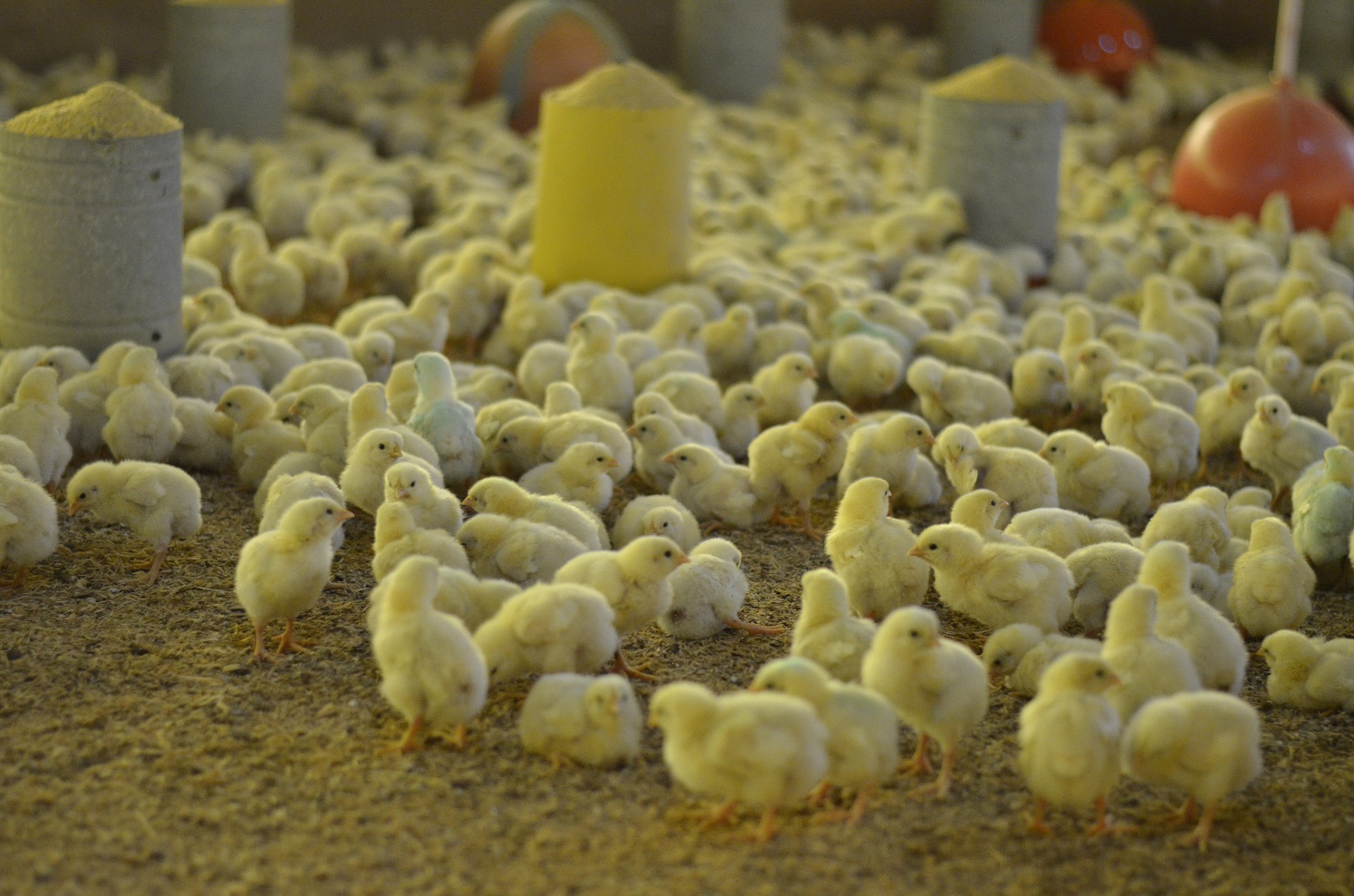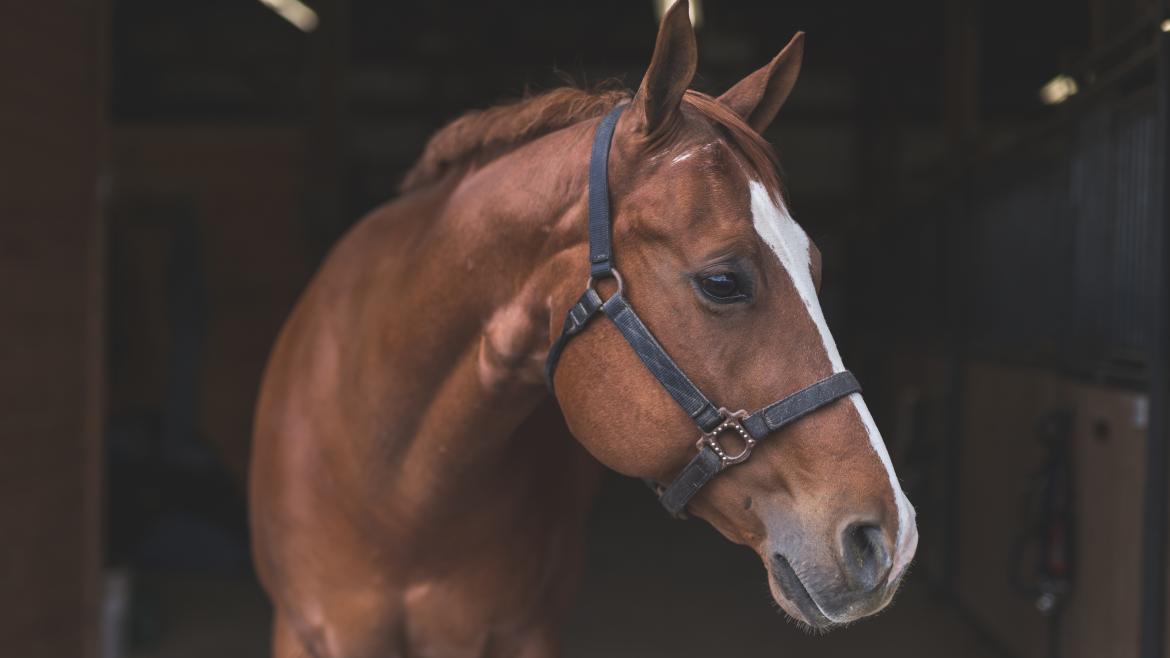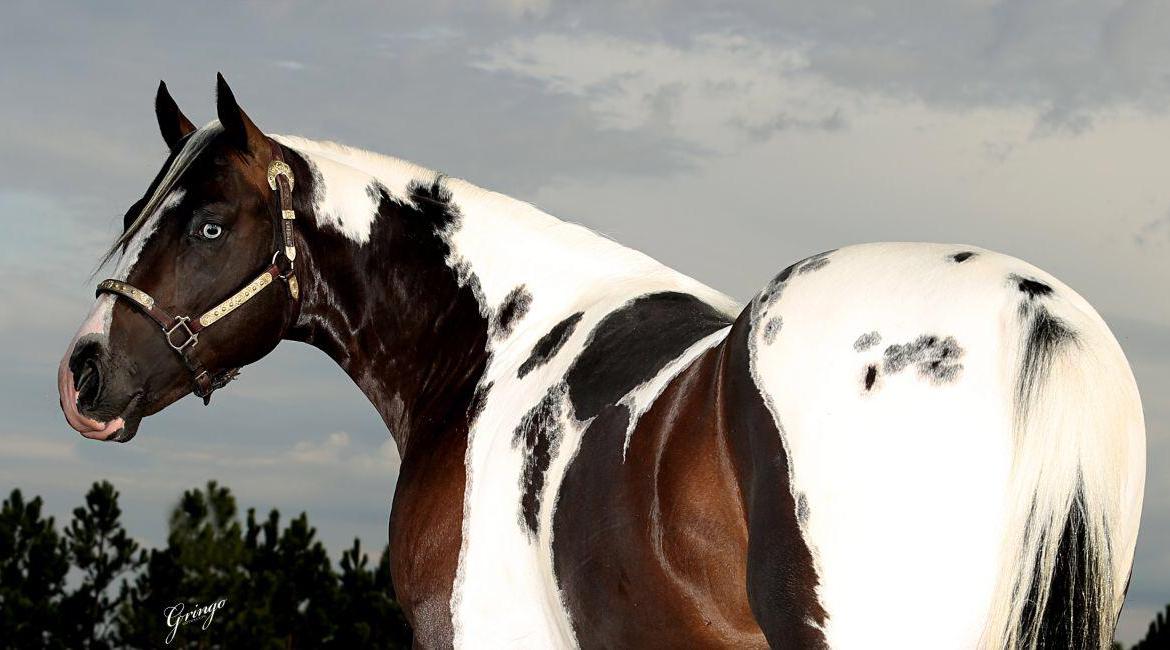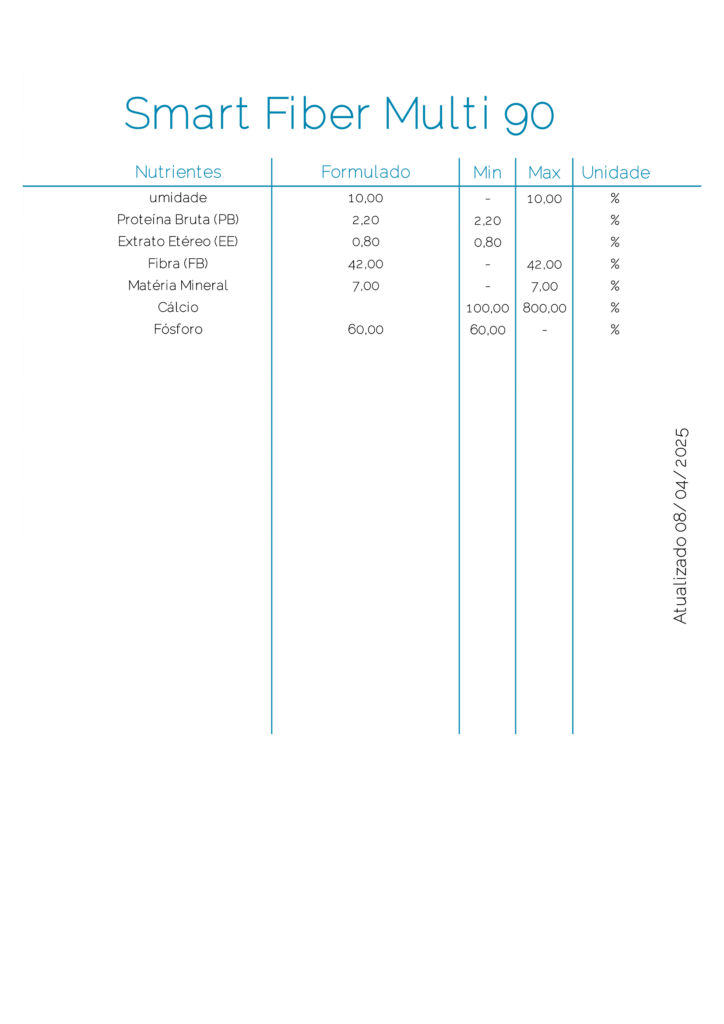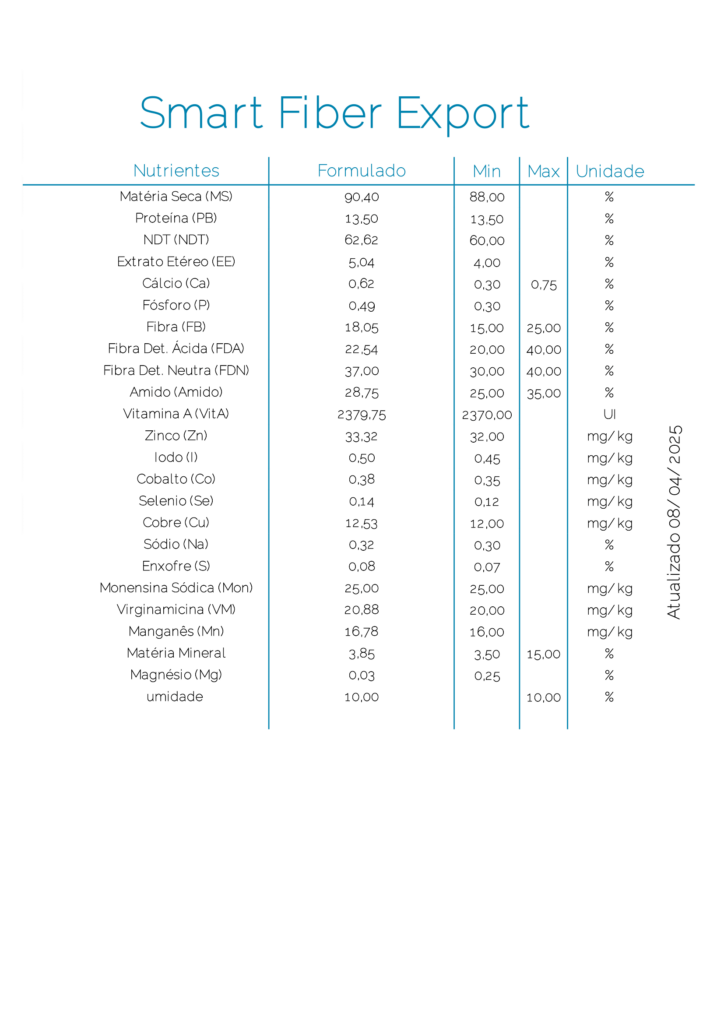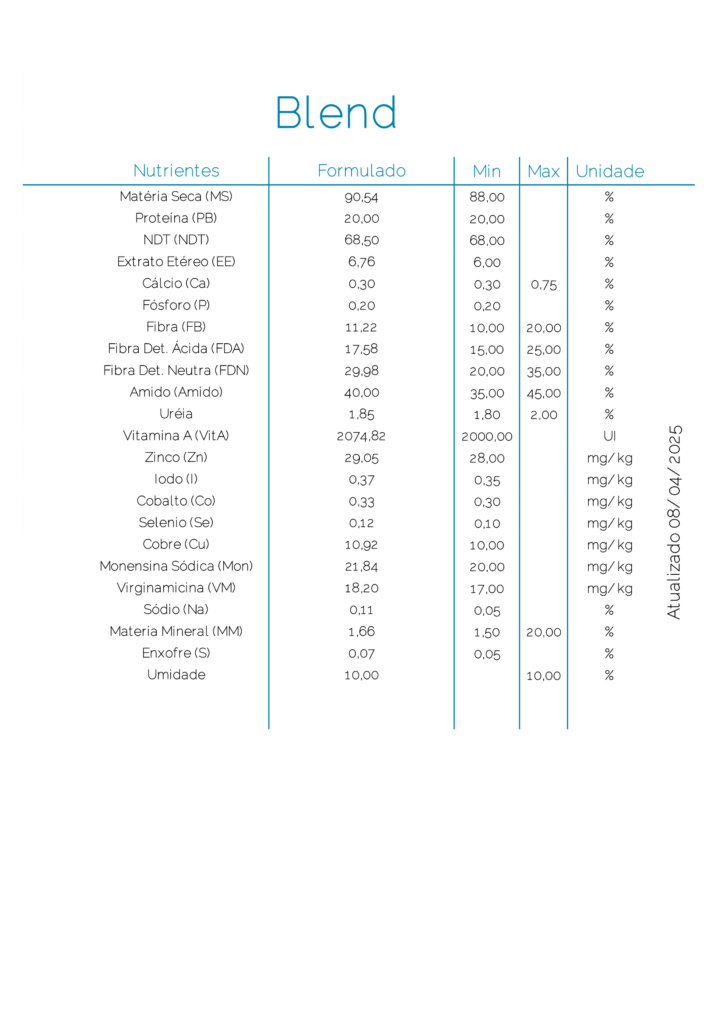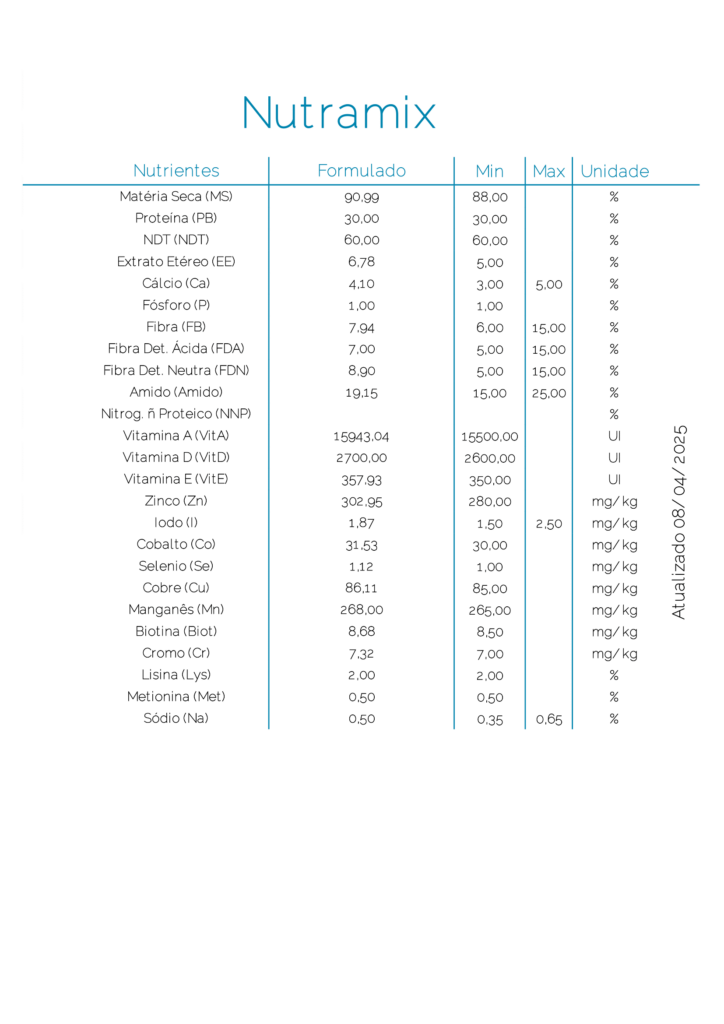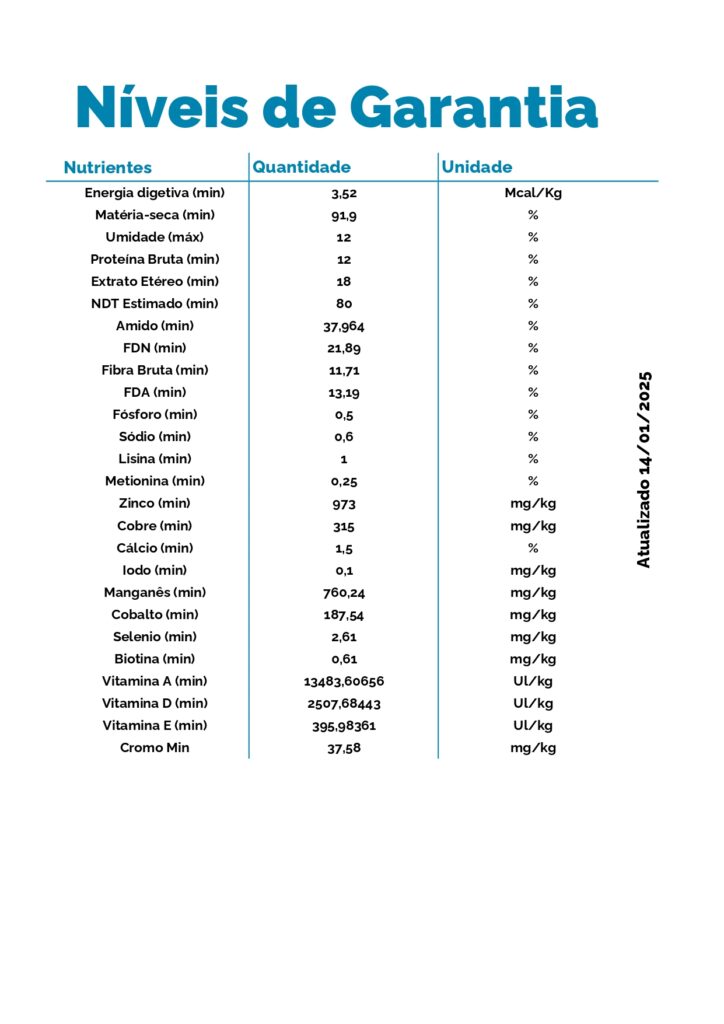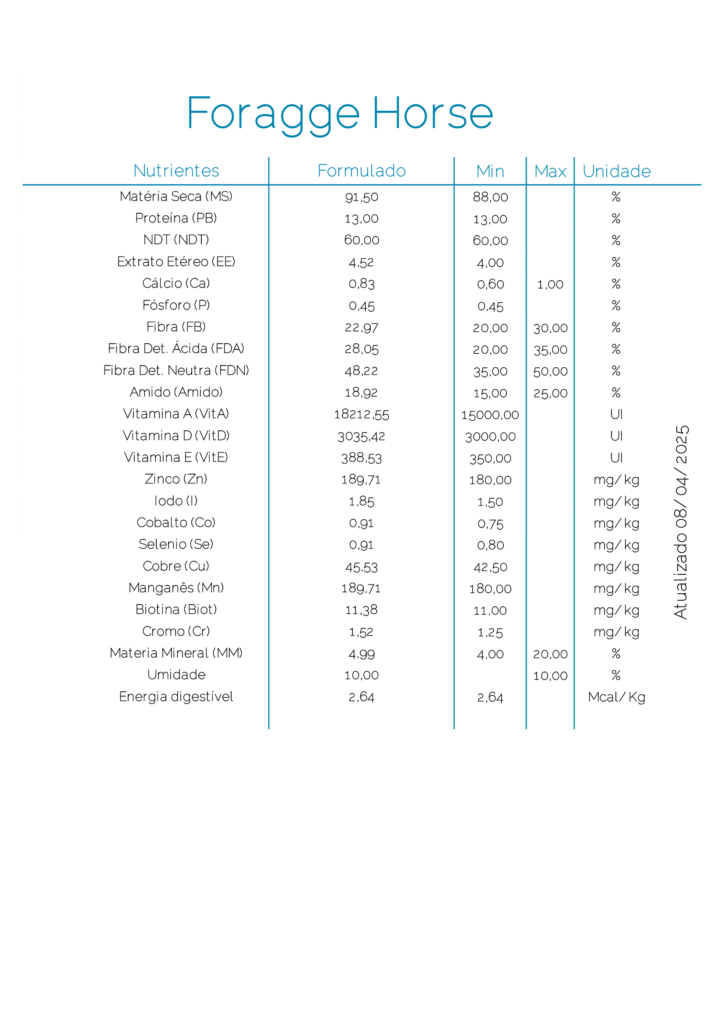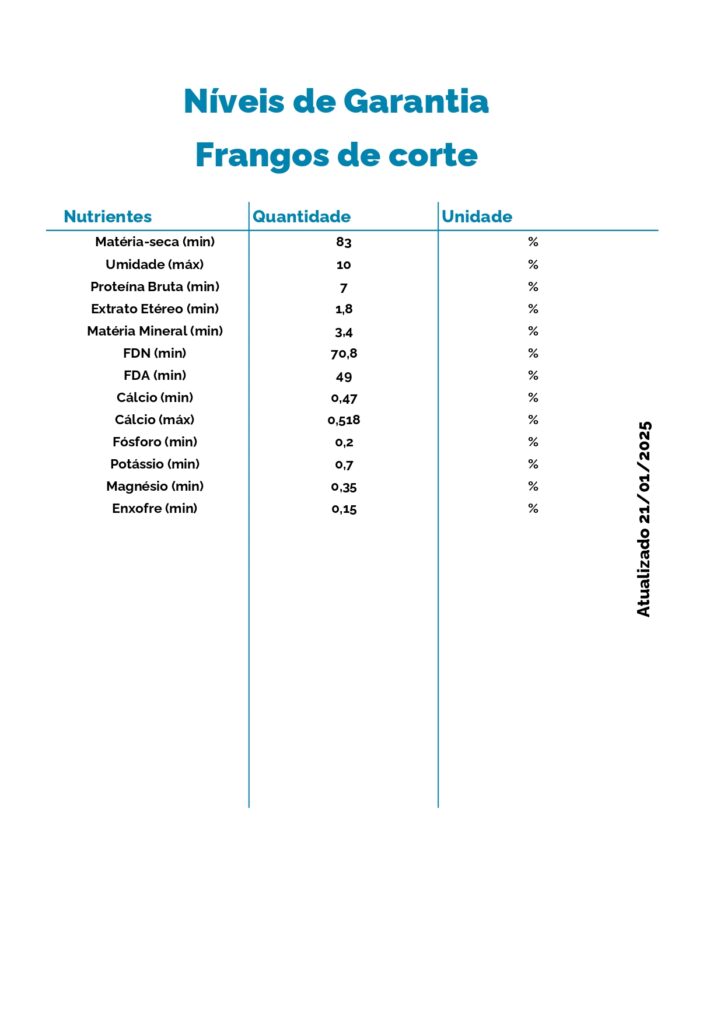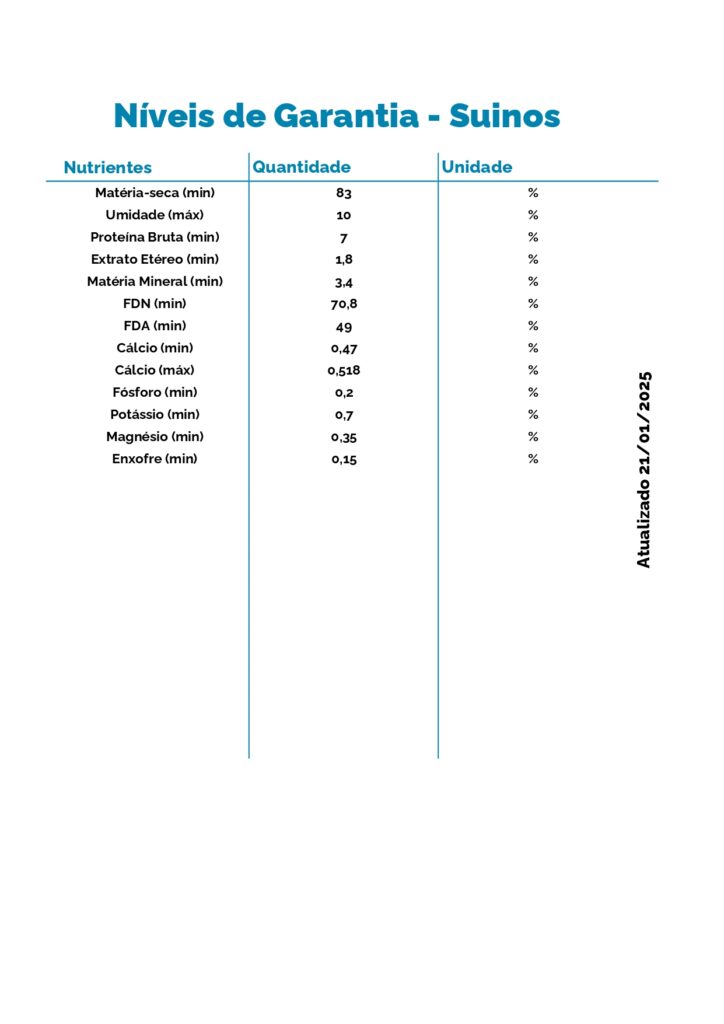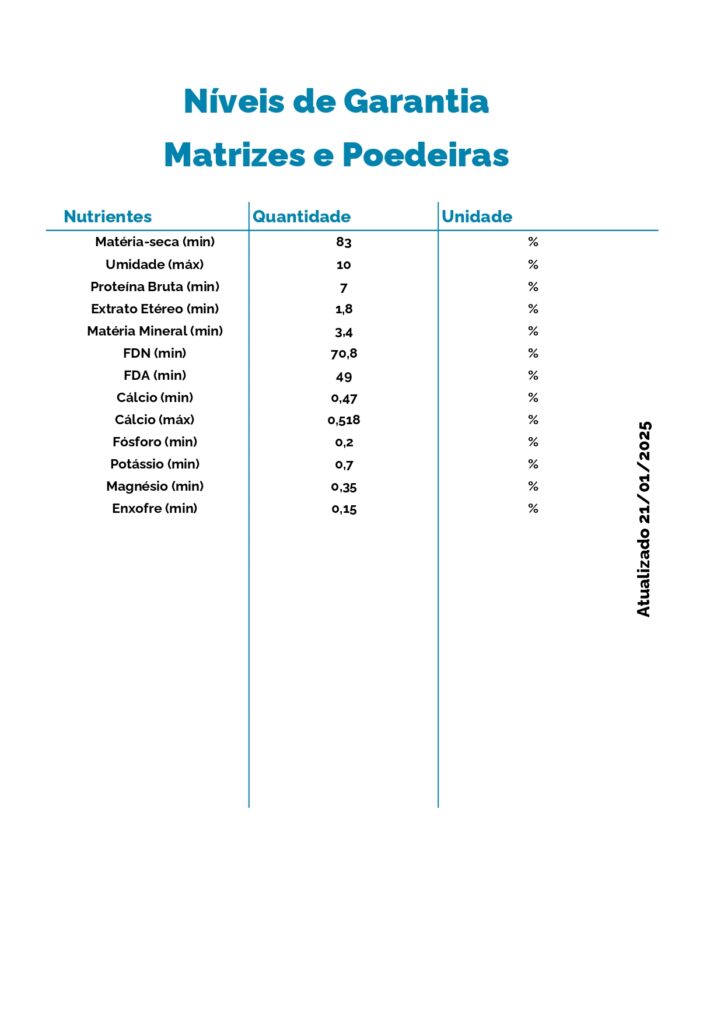CONTEXTO HISTÓRICO
Segundo Maurício Lopes, presidente da EMBRAPA, daqui para frente iremos cada vez mais ouvir o termo intensificação sustentável, o modelo de pecuária extensiva em pastagens de baixa produtividade deve ser convertido em sistemas integrados que permitem o crescimento vertical, ou seja, aumento de eficiência, produtividade e sustentabilidade sem aumento de área para produção (LOPES, Maurício. 2014).
O chefe-geral da Embrapa Gado de Corte, Cleber Soares, afirma que 95% da produção de carne no Brasil é sob pastagens, que 80% do rebanho é de corte e apenas 5% é produzida sob sistema de confinamento. Segundo ele, esses dados embasam a importância da nutrição e o impacto que a evolução desta ciência pode ter sobre toda a cadeira produtiva de carne e leite no Brasil (EMBRAPA, 2015).
NUTRIÇÃO CONVENCIONAL: RAÇÃO FARELADA E PELETIZADA
Um técnico com conhecimento na área de nutrição contribui muito com a maximização do lucro da propriedade pois é capaz de identificar as estratégias de manejo que irão alcançar maior eficiência alimentar e econômica. As possíveis combinações de ingredientes são infinitas e variam muito nas diversas regiões do país, com os conceitos claros esse profissional consegue ter flexibilidade para buscar sempre a dieta que irá oferecer o máximo de desempenho ao menor custo, mas sem perder de vista todas variáveis que afetam o lucro, às vezes uma pequena redução do ganho absoluto por animal, por exemplo, pode permitir uma maior taxa de lotação, resultando em maior lucro para a propriedade.
A ração farelada é justamente uma combinação de ingredientes disponíveis na região, que são moídos e misturados, depois ensacados no caso de serem processados por uma fábrica, formando o concentrado que é adicionado no cocho dos animais junto ao volumoso.
A ração peletizada é quando após o processo de dosagem, moagem e mistura da ração farelada, os ingredientes passam por um condicionador com umidade e temperatura, entre 75ºC a 85ºC. Em seguida, passam por uma câmera de compressão que força a passagem do produto por matrizes com pequenos furos e formam os peletes, que por fim são resfriados, e ensacados para transporte.
Existem muitos artigos e estudos que comprovam alguns benefícios da ração peletizada, alguns concluem que os benefícios não cobrem os diferenciais de custo, mas não se deve generalizar os resultados, é um produto já consolidado no mercado com produtores obtendo bons resultados com o uso desta tecnologia.
No entanto, nestes dois processos, apesar de terem as propriedades um pouco alteradas na peletização, cada ingrediente mantém suas caraterísticas originais, o milho continua sendo milho, a soja continua sendo soja e assim por diante. A taxa de fermentação dentro do rúmen é mantida ou pouco alterada, e as bactérias precisam de proteínas, fibras e energia ao mesmo tempo para produção máxima, mas como cada ingrediente tem um determinado tempo de degradação isso não ocorre de forma sincronizada e, deste modo é necessário um grupo específico de bactérias para digerir cada um dos componentes da dieta. Esse fator explica por exemplo, a alta taxa de desperdício de milho que saem nas fezes em dietas de grão inteiro, uma vez que, por apresentar características fermentativas diferentes dos outros nutrientes presentes na dieta, as bactérias do rúmen não conseguem atuar de forma eficiente na degradação do alimento, ocasionando assim baixo aproveitamento pela microflora ruminal.
A RAÇÃO EXTRUSADA EM OUTRAS INDÚSTRIAS
Neste contexto, surgiu a ração extrusada para ruminantes. A maioria de vocês deve lembrar que até pouco tempo atrás, apesar do conceito de ração para pet’s já existir há muito tempo, uma grande parte dos cães de estimação ainda eram alimentados com uma mistura de restos de alimentos. Hoje a ração extrusada para cães é uma realidade. A alimentação de pássaros, que é uma mistura de sementes, também já tem uma solução de ração extrusada que tem trazido ganhos para os criadores dado que esse tipo de alimentação evita a seleção e garante o correto balanceamento da dieta. E por último, Eduardo Ono, engenheiro agrônomo da Comissão Nacional de Piscicultura, em parceria com Sarah Oliveira, zootecnista da Instituto Nacional de Pesquisas da Amazônia, falaram sobre o impacto da ração extrusada na aquicultura:
“As rações industrializadas para organismos aquáticos existem há, pelo menos, duas décadas no país, sendo que as primeiras rações extrusadas comerciais para peixes começaram a ser disponibilizadas aos produtores no início dos anos 90. O uso das rações extrusadas para organismos aquáticos no país é, por muitos, considerado mais um marco histórico na produção aquícola, principalmente de peixes. E, com o passar dos anos, as vantagens do uso deste tipo de ração passaram a ser mais do que conhecidas pelos produtores e técnicos que atuam na área. Num passado não muito distante, os piscicultores não tinham muitas opções quando da escolha da ração a ser utilizada nos seus empreendimentos, pois eram poucas as indústrias que investiam na produção de uma linha de produtos de elevado custo, venda incerta e lucratividade duvidosa. Àqueles tomadores de decisão que resolveram investir no segmento nos seus primórdios, devemos o nosso reconhecimento” (ONO & OLIVEIRA,[201?]).
RAÇÃO EXTRUSADA COM FIBRA PARA RUMINANTES
Será que a ração extrusada poderia trazer algum benefício para ruminantes também? Há grupos de pesquisa de alto nível na área de nutrição no Brasil, mas o volume de pesquisas em rebanhos comerciais ainda é pequeno e ainda há muita coisa a ser entendida. A ênfase deve ser na eficiência com que os nutrientes são utilizados, isso envolve a formulação, o manejo no fornecimento, as misturas, condições de armazenamento, a contenção dos desperdícios, entre outros fatores, todos diretamente ligados à eficiência com que os bovinos utilizam os alimentos. É necessário parar de pensar nos alimentos, e pensar naquilo que as vacas precisam, independentemente de onde venha (PEDROSO, Alexandre. 2014).
Citações em trabalhos acadêmicos, sobre o impacto da extrusão nas propriedades físico-químicas dos ingredientes que são utilizados na nutrição para bovinos, em sua maioria, falam sobre a melhora na digestibilidade e inibição de fatores antinutricionais.
A extrusão é um processo onde os ingredientes passam por um equipamento fabril que, através de calor e pressão, força os ingredientes a passar por um cilindro, onde no final existe uma matriz com furos de menor diâmetro, que forma o produto final. A grande diferença entre a peletização e a extrusão é que, devido à temperatura acima de 100ºC e pressão, o processo causa o rompimento da parede das células vegetais levando a uma total fusão entre os ingredientes.Esses fatores trazem benefícios concretos e relevantes para a nutrição dos animais:
- SINCRONISMO:Os ingredientes são praticamente “desmontados” e agregados no processo de extrusão, somando às proteínas, energia, minerais, aditivos e fibras tornando-se um único alimento; o que aumenta a eficiência na fermentação ruminal e resulta em um melhor aproveitamento pelos animais.
- TAXA DE PASSAGEM: A inclusão da fibra é o grande diferencial do que vinha sendo testado nesta área, ela faz com que a “massa fundida” apresente menor densidade e boie no rúmen ficando próxima do local de maior concentração de bactérias, o MAT ruminal, tornando mais eficiente o processo fermentativo. Além de criar um fator de “arrasto” que faz com que o alimento fique mais tempo no rúmen, tendo maior exposição às bactérias e melhorando a conversão alimentar.
- AMBIENTE RUMINAL:O correto equilíbrio dos ingredientes, liberados dentro do rúmen de forma sincronizada, ou seja, na hora que o animal precisa, na quantidade que ele precisa, cria um pH ótimo, melhorando o ambiente ruminal sem a necessidade de qualquer “tamponante”.
- DIGESTIBILIDADE DOS INGREDIENTES:O processo de extrusão melhora a qualidade de todos os ingredientes com a questão da quebra das paredes celulares, de fato aumentando a digestibilidade, quando transforma alimentos de médio a bom aproveitamento em alimentos superiores.
Os benefícios para os índices zootécnicos são muitos, sem contar a isenção do risco de desmistura que torna a formulação muito mais, em alguns casos consegue-se substituir totalmente as fontes de fibras das dietas dos ruminantes, liberando áreas de pastagem para outras atividades. O importante como já dito, é olhar o lucro da propriedade como um todo. A nutrição, principalmente quando aliada à tecnologia da extrusão, ataca de frente os dois grandes problemas da pecuária, reduzida e tímida taxa de lotação e a baixa produtividade por hectare. Toda decisão envolve algum risco, mas sem novas atitudes não temos novos resultados.
Como todas as novidades há um certo período de maturação do produto no mercado, mas já existem em Goiás, Minas e São Paulo, produtores que deram o primeiro passo, já estão colhendo frutos e tendo resultados, tanto financeiros como operacionais, com ganho em saúde animal e fazendo bem ao meio ambiente com a redução da excreção de nutrientes, que em vez de sobrar nas fezes, vai para o bolso do produtor.
Um grande abraço,
Rodrigo B. Samaia e Katelyn K. S. Alves
Equipe de Marketing Nutratta
www.nutratta.com.br | Ração Inteligente
FONTES:
EMBRAPA Gado de Corte. 2015. Nutrição de bovinos de corte: Fundamentos e Aplicações. 1. ed. Brasília, DF. Disponível em:<http://ainfo.cnptia.embrapa.br/digital/bitstream/item/120040/1/Nutricao-Animal- livro-em-baixa.pdf>. Acesso em: 24 de maio de 2016.
LOPES, Maurício. Presidente da EMBRAPA sobre o papel da empresa no desenvolvimento da pecuária. Band Terra Viva, DBO na TV. 2014. Disponível em: <http://mais.uol.com.br/view/8tncj14f7l3t/mauricio-lopes- fala-sobre- o-papel- da-embrapa-no- desenvolvimento-da- pecuaria-04020D193072E0815326?types=A&>. Acesso em: 19 de maio de 2016.
MIRANDA, Pedro. Características forrageiras de variedades de cana-de- açucar desenvolvidas no estado de Alagoas, 2015. Disponível em: <http://www.ufal.edu.br/unidadeacademica/ceca/pos-graduacao/zootecnia/dissertacoes/pedro-alexandre- barbosa-pereira- miranda>. Acesso em: 19 de maio de 2016.
PEDROSO, Alexandre. Consultor da Cowtech sobre Pespectivas e Avanços na Nutrição de Gado de Leite no Brasil. Cowtech, Milk Point. 2014. Disponível em: <http://www.milkpoint.com.br/mypoint/11521/p_perspectivas_e_avancos_na_nutricao_de_gado_de_leite_no_brasil_entrevista_alexandre_pedroso_nutricao_de_bovinos_de_leite_alexandre_mendonca_pedroso_entrevista_cowtech_consultoria_manejo_de_bovinos_5623.aspx>. Acesso em: 19 de maio de 2016.
RICKLEFS, Robert apud. WIKIPEDIA. Teoria populacional malthusiana, 2016. Disponível em: <https://pt.wikipedia.org/wiki/Teoria_populacional_malthusiana>. Acesso em: 19 de maio de 2016.
ROSE, Ricardo. A Fome no mundo – Produção, distribuição e consumo de alimentos, 2015. Disponível em: <http://sustentahabilidade.com/a-fome- no-mundo- producao-distribuicao-e- consumo-de- alimentos/>. Acesso em: 19 de maio de 2016.
SOEST, Van. Citação clássica da semana da Universidade de Cornell nos EUA, 1992. Disponível em: <http://www.garfield.library.upenn.edu/classics1992/A1992HX84300001.pdf>. Acesso em: 19 de maio de 2016.
UFG. Histórico e importância dos Estudos com Nutrição e Alimentação, [201-?]. Disponivel em: <https://portais.ufg.br/up/66/o/Nut_anim_Hist_conceitos.pdf>. Acesso em: 19 de maio de 2016.

